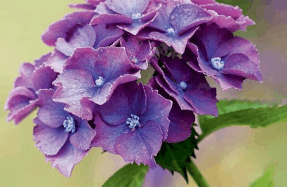

Whenever Whitby-based florist and paper flower maker Sophie Longhurst chances upon a bloom she thinks is especially beautiful, she puts it to one side to inspect. If possible, she slices it in half to reveal its perfectly evolved structure: the tougher protective sepals, the filaments of the stamen, the central pistil and then, surrounding them in all their infinite beauty, the petals, intimately graded in colour and form and even texture.
“I look at them and wonder, ‘now how am I going to replicate all this?’” says Sophie. She starts by making a record, pasting the flower parts into an A4 scrapbook and noting the specific colours and shapes of each one. “It helps if you have




